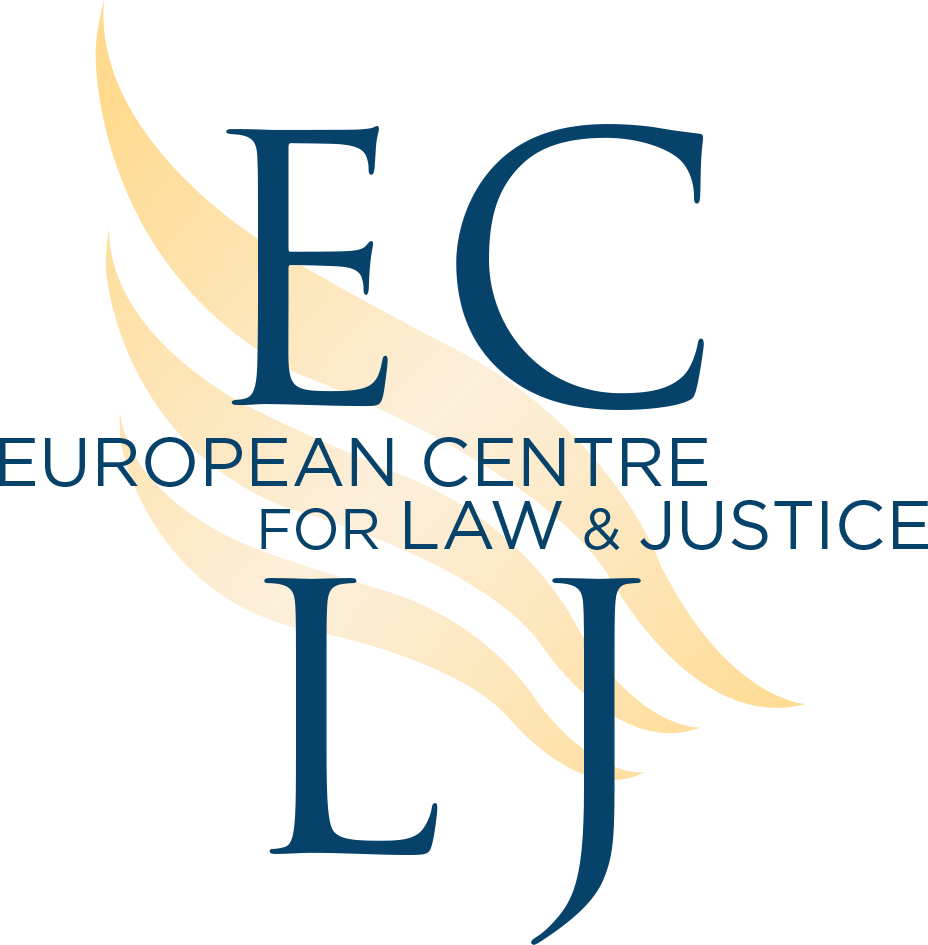Abortion on Demand and the European Convention on Human Rights
By Grégor Puppinck, PhD.
Director of the European Centre for Law and Justice
(ECLJ First published on 22 February 2013, on EJIL:Talk! the blog of the European Journal of International Law.)
The European Court of Human Rights (the Court) has issued several judgments on abortion, especially in recent years since the fundamental ruling of the Grand Chamber in A. B. and C. v. Ireland of 2010. In those cases, the Court found violations of the European Convention on Human Rights (the Convention) in specific situations where the life or health of the pregnant woman was endangered, or when the pregnancy was the consequence of rape. The purpose of this article is firstly to identify the rational of the Court on the matter of abortion, and secondly to observe how it applies to the vast majority of abortions practiced, i.e., “abortion on demand” (also called on request): abortions that are not justified by a matter of health, life, or rape, but by the free will of the woman.
Through its various rulings, the Court explicitly declared that abortion is not a right under the Convention: there is no right to have an abortion (Silva Monteiro Martins Ribeiro v. Portugal) or to practice it (Jean-Jacques Amy v. Belgium). The prohibition per se of abortion by a State does not violate the Convention, (Silva Monteiro Martins Ribeiro v. Portugal see also the case of the first two applicants who unsuccessfully complained of the prohibition of abortion on demandinA. B. and C. v. Ireland), but States can allow it for the sake of competing rights guaranteed by the Convention, i.e., the life and the health of the pregnant woman. In other words, it can be said that the Court tolerates an abortion if it is justified by a proportionate motive protected by the Convention.
It is uncontested, even by the promoters of a right to abortion, that there is no direct or indirect right to abortion on demand or abortion for socio-economic reasons in any international or regional treaty, including the European Convention on Human Rights (Ch. Zampas and J. Gher, “Abortion as a Human Right…” p. 287). Abortion on demand is illegal in three out of four countries in the world. When the Convention was drafted, abortion on demandwas widely recognised as a crime (Brüggemann and Scheuten v. Federal Republic of Germany§ 64). It is true that the absence of right does not create a prohibition and vice versa, but legal arguments supporting that abortion on demanddoes not damage the Convention do not resist the analysis. Applying the reasoning and case-law of the Court to such claims of abortions fails to find any justification under the Convention.
In cases where abortion is legal, the Court has established that its legal framework shall adequately take into account the different legitimate interests involved. The Court has stressed several times that “once the state, acting within its limits of appreciation, adopts statutory regulations allowing abortion in some situations”, “the legal framework devised for this purpose should be shaped in a coherent manner which allows the different legitimate interests involved to be taken into account adequately and in accordance with the obligations deriving from the Convention” (A. B. and C. v. Ireland § 249; R. R. v. Poland § 187;P. and S. v. Poland § 99; see also Tysiac v. Poland, § 116). This wording became the principle underpinning the regulation of abortion by the Court. Therefore, States are free to decide whether to allow abortion, but once the national legislator decides to legalise it, the Court can assess its legal frameworkby looking for whether, in the specific situation at stake, a fair balance was struck between the various rights and interests involved in the issue. As the Grand Chamber said simply, “It is also clear from an examination of these cases [of the Commission and Court] that the issue has always been determined by weighing up various, and sometimes conflicting, rights or freedoms” (Vo v France § 80). In synthesis, once a State decides to allow abortion, its “margin of appreciation is not unlimited” “as to how it balances the conflicting rights” and “the Court must supervise whether the interference constitutes a proportionate balancing of the competing interests involved” (A. B. and C. v. Ireland §§ 238; 237).
The Court has already identified a number of those “different legitimate interests involved” such as the legitimate interest of society in limiting the number of abortions (Odièvre v. France§ 45) and the interests of society in relation to the protection of morals (Open Door and Dublin Well Woman v. Ireland§ 63; A. B. and C. v. Ireland §§ 222-227). The Court has also identified a number of rights guaranteed by the Convention that can be curtailed by an abortion in addition to the right to life of the unborn (the status of which is still not clearly defined). One may think that the only Convention right affected by an abortion is the right to life of the unborn child. This is not the case, however, because if it were, how could one justify the prohibition of sexist or late-term abortions? Those rights are articulated in articles 3 and 8 of the Convention. The Court applied the prohibition of torture to the unborn in Boso v. Italy and the right to respect for family life to the “potential father” in X. v. the United Kingdomas well as to the potential grand-mother in P. and S. v. Poland. There are also other rights curtailed in specific situations, such as the freedom of conscience of health professionals (Tysiac v. Poland § 121; R. R. v. Poland § 206) and of medical institutions (Rommelfanger v. FRG). The matter of disabled people’s rights in regard to wrongful birth (K. v. Latvia) and wrongful life cases (M. P. v. Romania)is also currently before the Court.
As shown by its case-law, for the Court abortion should have (at least apparently) an objectivemotive that may outweigh the various competing rights and interests affected by the procedure and guaranteed and recognised by the Convention, namely the protection of the life and of the health of the pregnant woman.
Examining the Court’s case-law, it appears that the Court has never admitted that the free-will or the autonomy of the woman could, on its own, suffice to justify an abortion. No right to abortion stems from the right to personal autonomy; as it was reaffirmed recently in the P. and S. v. Poland case, the Grand Chamber of the Court “has held that Article 8 [guaranteeing personal autonomy] cannot be interpreted as conferring a right to abortion” inA. B. and C. v. Ireland (§ 214). Therefore, while abortion on demand finds no justification under the Convention, it affects rights guaranteed by the Convention and interests recognized by it. The curtailment of those rights and interests by abortion on demand is not balanced with and justified by any competing right guaranteed by the Convention. Consequently, abortion on demand violates the Convention even though it represents the vast majority of all abortions performed. This violation by the State is even more flagrant when we do not merely consider the negative obligations of States under the Convention not to take life, but also the positive obligations to protect and support life, the pregnant woman, and family life.
Logically, regarding abortions that are not on demand, their necessity and proportionality with their cause and aim should be established in order to respect the Convention (A. B. and C. v. Ireland§ 249; R. R. v. Poland § 187;P. and S. v. Poland § 99).
The only way for the Court to conclude that abortion on demand would not violate the Convention would be to declare that the unborn child is not a person, and, in addition, to decline to offer protection for other rights and interests affected by the abortion. For that, the Court would have to push the unborn into a legal gap. On the one hand, the Court allows States, withintheir margin of appreciation, to determine in their internal order “when the right to life begins” (Vo v France § 82). On the other hand, the Court since Brüggemann and Scheuten v FRG (§ 60) and R. H. v. Norway(p. 167) has always refused to exclude the unborn from the field of application of the Convention and to declare that he/she is not a person within the meaning of the Convention. In Vo v France, the Grand Chamber said “that it is neither desirable, nor even possible as matters stand, to answer in the abstract the question whether the unborn child is a person for the purposes of Article 2 of the Convention” and added that “it may be regarded as common ground between States that the embryo/foetus belongs to the human race” and that he/she “require[s] protection in the name of human dignity” (§ 85). As Judge Jean-Paul Costa explained “Had Article 2 been considered to be entirely inapplicable, there would have been no point – and this applies to the present case also – in examining the question of foetal protection and the possible violation of Article 2, or in using this reasoning to find that there had been no violation of that provision” (Separate Opinion in Vo v France §11).
At first glance, people may think that abortion on demand is acceptable under the Convention because the Court has not yet condemned a State for permitting it. It is so only because of the general toleration of abortion in Europe, because the direct victims of abortion never had the chance to survive and to complain before the Court, and because the opponents to abortion have not been recognised as victims (Borre Arnold Knudsen v. Norwayand X. v. Austria). Until now, only pregnant women have been able to successfully complain, as victims, for difficulties in access to legal abortion, for malpractice, or for physical complications as a result of abortion (Csoma v. Romania). Regarding the father, the Court has recognized that “as a potential father… he could claim to be a victim” of the abortion practiced on his unborn child (Boso v. Italy, see also X. v. the United Kingdom). The reason why the Court found no violation of the father’s rights is only because, in those cases, abortions were declared aimed at preserving the mothers’ health, and therefore justified and proportionate in the eyes of the Court. Judge Jean-Paul Costa noticed a contrario: “It would have had to reach the opposite conclusion had the legislation been different and not struck a fair balance between the protection of the foetus and the mother’s interests. Potentially, therefore, the Court reviews compliance with Article 2 in all cases in which the “life” of the foetus is destroyed” (Separate opinion in Vo v France § 13). The Court also recognized under article 8 that “the interests and life prospects of the mother of a pregnant minor girl are also involved in the decision whether to carry the pregnancy to term or not” (P. and S. v. Poland § 109), therefore, a potential grand-parent can also have locus standi.
Possibly, a father or grand-parent of an unborn child will one day complain before the Court and succeed in saving the life of their child. All that a father or grand-parent would have to do is fax a letter to the Court under article 39 of the Rules of the Court, requesting it to take urgent and interim measures in order to avoid the realization of a serious and imminent risk of breach of a fundamental right. The Court has already applied article 39 of the Rules in order to save in vitro embryos from destruction: in Knecht v. Romania, the applicant alleged a violation of her right to private and family life with regard to frozen embryos she had previously conceived in order to have a child by means of IVF. Four days after her request, the ECHR indicated to the Romanian Government that “in the interests of the parties and the proper conduct of the proceedings before the Court (…), under Rule 39 of the Rules of the Court, that the embryos should not be destroyed (…), for the duration of the proceedings before the Court” (§ 19). Therefore, the Court could also order, under article 39, that the in utero embryo or fetus should not be destroyeduntil it assessed the compatibility with the Convention of this abortion.
All the father or grand-parent of an unborn child would have to do is to request that the rights to life (art. 2) and to physical integrity and dignity (art. 3) of their unborn child or grand-child be preserved, and that their right to family life (art. 8) be protected. The relatives of the unborn child could successfully obtain from the Court an order to suspend the procedure of abortion, if they demonstrate that this abortion is not justified by proportionate motives guaranteed by the Convention; they may also inform the Court that they are ready to rear the child. This procedure has never been used yet to stop an abortion, but it could be an effective way to save lives. It would be in continuity with the original meaning of the Convention and with the Court’s own case-law.
So far, the Court has stayed on the edge, refusing to throw the unborn child out of the scope of the Convention and refusing to let him “naked”, without any legal protection. So far, the Court has gone as far as it could to tolerate abortion without nullifying the human beings before their birth. Currently, abortion advocates are repeatedly demanding the Court to jump this gap and to throw the unborn out in the name of human rights.
There is still time for the Court to uphold its mission to protect every human being, especially the weakest. It is true that people, at least in Western countries, do not really care for the life of the child before birth; maybe simply because we are out of danger: we no longer face the risk of being aborted. We care much more for the human rights that we ourselves may be deprived of. However, abortion on demand is nothing other than the domination of the born over the not-yet-born. One can say that it has its own legitimacy, but this legitimacy is only one of violence, even if we call this violence freedom; it should not be covered up with the legitimacy of human rights.
Case law cited:
X. v. Austria, N° 7045/75, Com., Dec., 10 December 1976
Brüggemann and Scheuten v. Federal Republic of Germany, No .6959/75, Com., Dec. 12 July 1977
Jean-Jacques Amy v. Belgium, No 11684/85, Com., Dec. 5 October 1988
X. v. the United Kingdom, No. 8416/78, Com., Dec. 13 May 1980
Borre Arnold Knudsen v. Norway, N° 11045/84, Dec., 8 March 1985
Rommelfanger v. FRG, N° 12242/86, Com., Dec., 6 September 1989.
R. H. v. Norway, No. 17004/90, Dec. 19 May 1992
Open Door and Dublin Well Woman v. Ireland, No. 14234/88; 14235/88, 29 October 1992.
Jerzy Tokarczyk v. Poland, N° 51792/99, Dec., 31 January 2002
Boso v. Italy, No. 50490/99, Dec., 5 September 2002
Odièvre v. France [GC], N° 42326/98, 13 February 2003
Vo v France, [GC] No 53924/00, 8 July 2004
Silva Monteiro Martins Ribeiro v. Portugal, No 16471/02, Dec., 26 October 2004
Tysiac v. Poland, No. 5410/03, 20 March 2007
A. B. and C. v. Ireland, [GC] 16 December 2010
R. R. v. Poland, No. 27617/04, 26 May 2011
Knecht v. Romania, N° 10048/10, 2 October 2012
P. and S. v. Poland, N° 57375/08, 30 October 2012
Csoma v. Romania, No 8759/05, 15 January 2013
K. v. Latvia, N° 33011/08 communicated, pending.
M. P. v. Romania, N° 39974/10, communicated, pending







